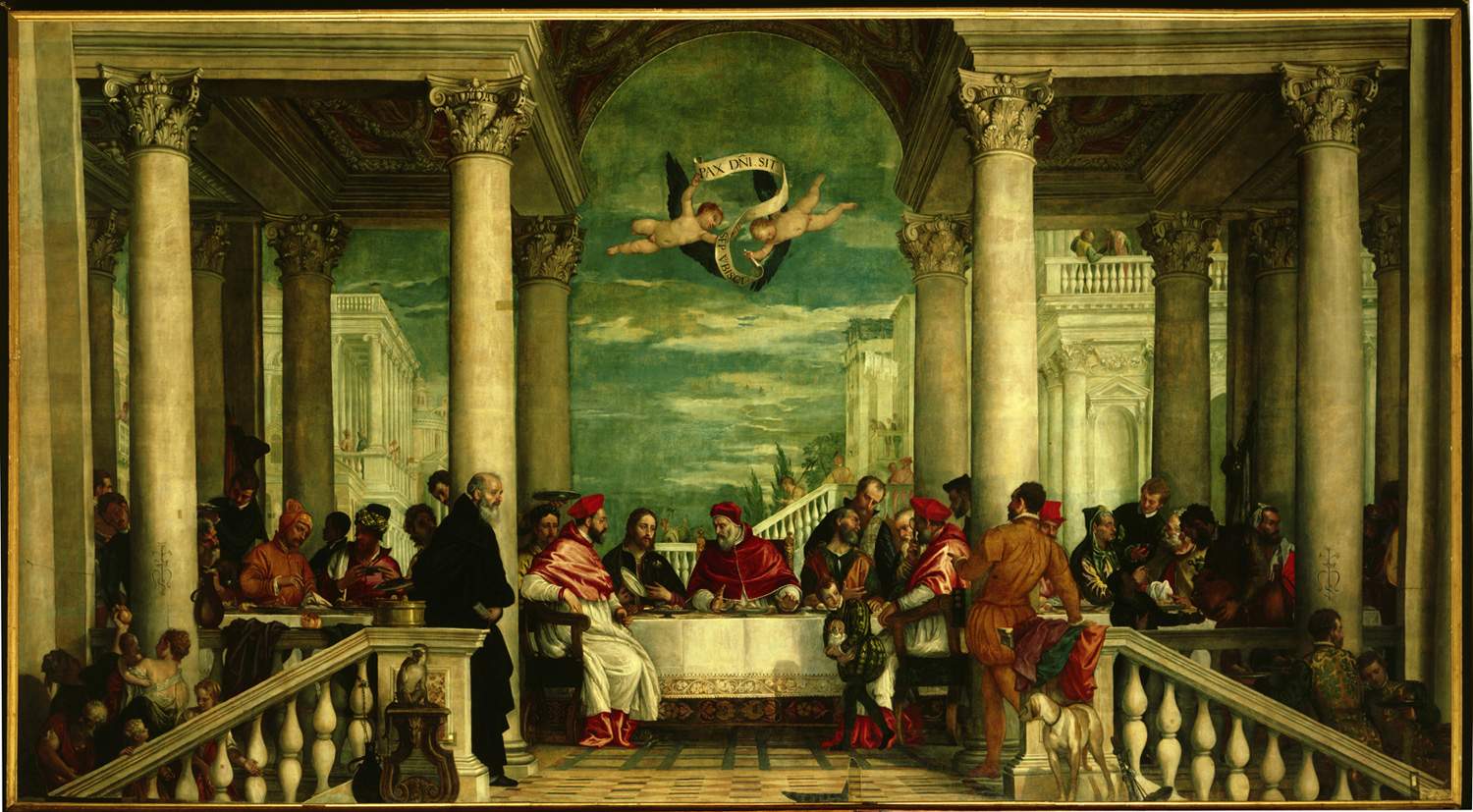Vicenza, Veronese's masterpiece, Monte Berico's "Supper of St. Gregory the Great," goes for restoration
In Vicenza green light to the restoration of a masterpiece by Paolo Veronese (Paolo Caliari; Verona, 1528 - Venice, 1588), the Supper of St. Gregory the Great, preserved at the Sanctuary of the Madonna of Monte Berico. The intervention comes as part of Intesa Sanpaolo’s Restitutions program, the bank’s two-year restoration program that began in 1989 and has so far led to the restoration of 1,300 works. The restoration will begin in September and be completed by 2021 and will be overseen by the Superintendence of Verona, Rovigo and Vicenza, which will be responsible for the preliminary investigations and direction of the intervention, in collaboration with theOpificio delle Pietre Dure in Florence. The restorer Valentina Piovan will be in charge of the work: the work will be studied both from a historical-conservative point of view by checking documentary and iconographic sources and comparing it with other works by the author, and from a scientific point of view with punctual verification through chemical and physical investigations to support the restoration intervention.
The Supper of Saint Gregory the Great, dating from 1572, is a work of great value and is of peculiar importance due to the fact that it is the only “supper” by Veronese still preserved in the place for which it was made. The episode, which is very common in art history, refers to one of the dinners that St. Gregory the Great offered to the poor, and it is realized in the sumptuous and colorful terms typical of the “dinners” of Veronese, who used to set paintings of this kind under sumptuous loggias (which might indicate a closeness to Palladio) populated by a great many characters (women, men, children, and even animals) and open to blue skies veiled with clouds. Veronese’s Supper also experienced Napoleonic spoliation: during the occupation it was taken from Vicenza and transferred to Brera, then in 1817 returned to its home. The painting then suffered damage in 1848, when it was cut into 32 pieces by Austrian soldiers during the Monte Berico clashes as part of the First War of Independence (it was later restored at the behest of the Austrian emperor himself, Franz Joseph).
“It is with great emotion,” says the mayor of Vicenza, Francesco Rucco, “that I announce the start of the restoration of a work of exceptional artistic and historical value, housed in a place that is both a symbol for the city and a pilgrimage destination for millions of faithful. Intesa Sanpaolo, to whom I express sincere gratitude also on behalf of my fellow citizens, could not have chosen a better subject to celebrate 30 years of Restitutions. It is also thanks to the support of enlightened patrons that public institutions today can continue to take care of an artistic heritage of inestimable value, but with equally important recovery and enhancement costs. In the 30 years of Restitutions, Intesa Sanpaolo has always been generously at the city’s side and today crowns this well-deserving path with a truly extraordinary intervention, the stages of which can be followed live by visitors during a construction site that we will make accessible for guided tours.”
“Two important anniversaries in 2019 mark the history of Intesa Sanpaolo’s Culture Project and our bank’s relationship with the city of Vicenza,” says Giovanni Bazoli, chairman emeritus of Intesa Sanpaolo. “Twenty years ago we established at Palazzo Leoni Montanari the first headquarters of the Gallerie d’Italia, and ten years earlier, in 1989, President Feliciano Benvenuti gave life to the Restituzioni program, to which Intesa Sanpaolo has over time ensured continuity, with conviction and a sense of responsibility, interpreting its role as the country’s leading Bank also in contributing to the protection and enhancement of national historical-artistic heritage. We crown the 30th anniversary of a grand project, in which the Bank and public institutions respectfully collaborate, with the restoration of a painting by Veronese, an extraordinary example of the artistic wealth of the Veneto region. The intervention consolidates Intesa Sanpaolo’s deep dialogue with the city of Vicenza and testifies to the inescapable link of Restituzioni’s history with the community and the cultural heritage of Vicenza.”
In 2020 there will be many initiatives on the occasion of the restoration of the monumental canvas: a whole year of events with the evocative title #aspettandoVeronese to accompany the major restoration campaign until the canvas is returned, in its new guise, to the city of Vicenza and the world. The Vicenza public and tourists will have the opportunity to get into the heart of the restoration by following its developments thanks to guided tours by reservation; a rich program of collateral activities aimed at getting to know the “Veronese Vicentino” will also be proposed, getting to the heart of extraordinary works exhibited, in addition to Monte Berico, in the church of Santa Corona and at the Civic Museums.
Pictured: Paolo Veronese, Supper of St. Gregory the Great (1572; oil on canvas, 445 x 878 cm; Vicenza, Sanctuary of Monte Berico)
 |
| Vicenza, Veronese's masterpiece, Monte Berico's "Supper of St. Gregory the Great," goes for restoration |
Warning: the translation into English of the original Italian article was created using automatic tools. We undertake to review all articles, but we do not guarantee the total absence of inaccuracies in the translation due to the program. You can find the original by clicking on the ITA button. If you find any mistake,please contact us.



























